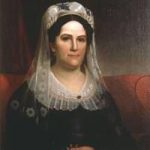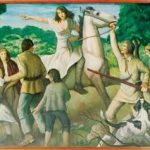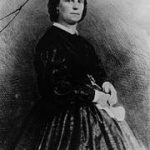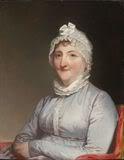Civil War Diarist from Pennsylvania

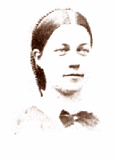 Rachel Bowman was born in Canada in 1836. During a time when few women had the opportunity for a formal education, Rachel received the equivalent of a bachelor’s degree from Otterbein University in Westerville, Ohio.
Rachel Bowman was born in Canada in 1836. During a time when few women had the opportunity for a formal education, Rachel received the equivalent of a bachelor’s degree from Otterbein University in Westerville, Ohio.
Image: Samuel and Rachel Cormany
To pay Rachel’s tuition, the family had moved to Westerville and opened a boarding house for students. One of those students was Samuel Cormany. Rachel graduated from Otterbein in 1859 and moved to eastern Pennsylvania to teach in the Quakertown Schools.
Samuel Cormany followed her there and asked her to be his wife. She accepted, and they were married in November 1860. On their wedding trip, the couple visited Rachel’s relatives in Canada, and they decided to stay. From there, Samuel and Rachel followed the events leading up to the Civil War. Their first child, Mary Cora, was born there.
In 1862, the couple moved to Chambersburg, Pennsylvania, where Samuel grew up. He felt a patriotic duty to his country and soon enlisted as a second lieutenant in the 16th Pennsylvania Cavalry. Rachel and Cora first stayed with Samuel’s mother and stepfather, Mary and Daniel Byers, on their farm just north of Chambersburg, but later moved into town.
In June 1863, Chambersburg lay squarely in the valley up which General Robert E. Lee launched his second invasion of the North. The evacuation of local militia units left the town undefended.
During the early days of the Gettysburg Campaign, in the summer of 1863, much of the Army of Northern Virginia passed through Chambersburg en route to Gettysburg, and General Lee established his headquarters at a nearby farm.
Rachel recorded events as they happened in her diary:
June 16, 1863:
Retired at 11 o’clock. All was very quiet, so we concluded that all those reports must be untrue about the Rebs being so near. At 11-1/2, I heard the clattering of horses hoofs. I hopped out of bed and ran to the front window and sure enough there the Greybacks were going by as fast as their horses could take them down to the Diamond [at the center of town]. Next I heard the report of a gun then they came back faster if possible than they came in. But a short time after, the whole body came. It took a long time for them all to pass.
June 18, 1863:
Soon after dinner the town was all in excitement again – the report came that the Rebs are coming back, but I have not been frightened yet.
June 20, 1863:
The report came last night that 40,000 or 50,000 infantry and some artillery have taken possession of Hagerstown – that the camps extend nearly to Greencastle – things surely look a little dubious. Got a letter from My Samuel. It is but short. He is still safe, but was under marching orders again.
June 23, 1863:
It was not long until the Rebs really made their appearance. They rode in as leisurely as you please, each one having his hand on the trigger though, to fire any minute. I just wonder what they want this time. They are part of those that were here last week. The Reb’s have been cutting up high. Sawed down telegraph poles, destroyed the Scotland Bridge again, took possession of the warehouses and were dealing out flour by the barrel and molasses by the bucketful. They made people take them bread, meat, and to eat. Some dumb fools carried them jellies and the like. Not a thing went from this place.
June 24, 1863:
Another eventful day has passed. At 10 A.M. the infantry commenced to come and for 3 hours they just marched on as fast as they could. It is supposed that about 15,000 have already passed through, and there are still more coming. It is thought by many that a desperate battle will be fought at Harrisburg . This P.M. the Rebs are plundering the stores. Some of our merchants will be almost if not entirely ruined.
June 27, 1863:
Before we got started the rebels poured in already. They just marched through. Such a hard looking set I never saw. All day since 7 o’clock they have been going through. Between 30 and 40 pieces of cannon and an almost endless trail of wagons . Generals Lee and [James] Longstreet passed through today. A body would think the whole south had broke loose and are coming into Pa. It makes me feel too badly to see so many men and cannon going through knowing that they have come to kill our men. As they pass along they take the hats off our citizens’ heads and throw their old ones in exchange.
July 2, 1863:
At 3 a.m. I was wakened by the yells and howls of this dirty ragged lousy trash. They made as ugly as they could. All day they have been passing – part of the time on the double quick. At one time, the report came that our men had come on them and that they were fighting. The excitement was high in town, and I imagined that I could already see My Samuel falling. I feel very uneasy about him.
The Battle of Gettysburg reached a climax on July 3 when a Confederate effort to break the center of the Union line failed disastrously. That effort featured the massive infantry offensive known as Pickett’s Charge. Later, Union field gunners repelled the infantry offensive and inflicted heavy casualties on the retreating Confederates after their attack had been turned. Lee was defeated at Gettysburg and driven back to Virginia.
July 6, 1863:
I was sitting reading, when little Willie Wampler came running as fast as he could to tell me a soldier had come to see me and sure enough when I got to the door Mr. Cormany just rode up. I was so very glad to see him that I scarcely knew how to act. He was very dirty and sweaty so he took a bath and changed clothes.
But Samuel was not home to stay. He returned to his unit after a short visit. In April of 1865, General Lee was forced to abandon Petersburg, and he made a desperate run for the safety of the Appalachian Mountains.
General Ulysses S. Grant immediately ordered his cavalry to pursue the fleeing Confederates. The 16th Pennsylvania Calvary was among those in the forefront of the chase. At Appomattox Court House, Samuel’s regiment helped establish the advantageous Union position that convinced Lee to surrender rather than fight on.
Rachel and Samuel Cormany were finally reunited on August 27, 1865. They migrated to Macon County, Missouri, after the war, where Samuel had originally planned for them to live before the war intervened. They were able to spend their fourth anniversary on their own farm.
However, the Cormanys found the volatile political climate of Reconstruction-era Missouri not to their liking. In October 1868 they sold their farm and joined a small party that was emigrating to the plains of southern Kansas. There, Samuel took up the Cherokee circuit of the United Brethren Church, and Rachel opened a school.
Samuel’s health began to fail, and he resigned from circuit riding in 1878 to recuperate in northern Michigan. There he served a small community church and began some modest business ventures “to secure the means to educate our daughter, Cora, now sixteen.” In 1880, a proud Rachel sent Cora off to Otterbein.
Motherhood was her true calling.
